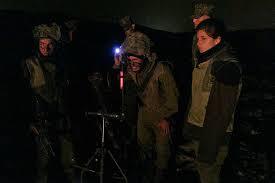
The Israeli Defense Forces (IDF) have launched a focused military operation in Rafah, a key city in the southern Gaza Strip, with the explicit goal of dismantling Hamas’ extensive tunnel network. This initiative aims to cripple the operational capabilities of Hamas’ Rafah Brigade within a month.
Objective and Strategy
The IDF’s strategy centers on targeting the sophisticated tunnel systems used by Hamas for smuggling weapons, moving militants, and executing attacks against Israel. These tunnels have been a long-standing concern for Israeli security forces, who view them as a significant threat to national security. The IDF believes that neutralizing these tunnels is crucial for reducing Hamas’ ability to launch cross-border attacks and sustain its militant activities.
The operation involves ground troops, engineering units, and intelligence assets working together to locate and destroy the tunnels. According to IDF spokespersons, the mission is part of a broader effort to weaken Hamas’ military infrastructure and diminish its capacity to pose a threat to Israel.
The Scope of the Tunnel Network
Hamas’ tunnel network in Rafah is reported to be extensive, with many of the tunnels stretching several kilometers and some reaching deep into Israeli territory. These tunnels are often equipped with ventilation systems, lighting, and reinforced walls, making them difficult to detect and destroy. They serve multiple purposes, including storing weapons, launching surprise attacks, and providing safe passage for militants.
The IDF has faced significant challenges in dealing with these tunnels, which are typically hidden beneath civilian infrastructure. This complicates efforts to target them without causing collateral damage or civilian casualties. The current operation is thus designed to be precise and effective, minimizing harm to civilians while achieving its military objectives.
Impact on Gaza’s Civilian Population
The operation in Rafah has raised concerns about the potential humanitarian impact on Gaza’s civilian population. Rafah, one of Gaza’s most densely populated areas, has already suffered from years of conflict and economic hardship. The destruction of tunnels, while aimed at neutralizing Hamas’ military capabilities, could disrupt daily life and exacerbate the already dire humanitarian situation.
International organizations and human rights groups have called for caution and have urged all parties to ensure the protection of civilians. The IDF has stated that it is making every effort to avoid civilian casualties and has implemented measures to provide warnings before strikes.
Hamas’ Response
Hamas has condemned the IDF’s operation, accusing Israel of escalating the conflict and targeting civilian infrastructure under the guise of counter-terrorism. In a statement, Hamas vowed to continue its resistance and warned of retaliation against Israeli targets. The militant group, which governs Gaza, views the tunnels as a crucial element of its defensive strategy and its ability to resist what it describes as Israeli aggression.
International Reactions
The international community has expressed mixed reactions to the IDF’s operations. While some countries support Israel’s right to defend itself and address security threats posed by militant groups, others have called for restraint and emphasized the need for a peaceful resolution to the conflict. The United Nations has urged both Israel and Hamas to de-escalate tensions and prioritize the safety and well-being of civilians.
Conclusion
As the IDF continues its operations in Rafah, the focus remains on dismantling the Hamas tunnel network to reduce the threat of future attacks. The success of this operation could significantly impact the military dynamics in Gaza and the broader Israeli-Palestinian conflict. However, the humanitarian implications and the potential for further escalation underscore the complexities and challenges of addressing security concerns in such a volatile region.


